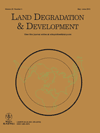
LAND DEGRADATION & DEVELOPMENT
Scope & Guideline
Fostering interdisciplinary insights for sustainable land management.
Introduction
Aims and Scopes
- Land Degradation Assessment:
Research on the causes, processes, and impacts of land degradation, including soil erosion, salinization, and desertification, using various methods such as remote sensing, soil sampling, and ecological modeling. - Ecosystem Restoration and Rehabilitation:
Studies focusing on techniques and strategies for restoring degraded lands, including afforestation, reforestation, and the use of biochar and other organic amendments to enhance soil health and ecosystem functions. - Soil Health and Management Practices:
Investigations into soil quality indicators, nutrient cycling, and the effectiveness of various agricultural practices (e.g., no-till farming, cover cropping) on maintaining or improving soil health. - Impact of Climate Change on Land Systems:
Research exploring the interactions between climate change and land use, including the effects of changing precipitation patterns and temperature on soil properties, vegetation dynamics, and land degradation. - Biodiversity and Ecosystem Services:
Exploration of the relationships between land use, biodiversity, and ecosystem services, focusing on how land management practices influence ecological functions and services.
Trending and Emerging
- Microbial Ecology and Soil Health:
An increasing number of studies focus on the role of soil microbial communities in enhancing soil health, nutrient cycling, and ecosystem resilience, emphasizing the importance of biological indicators. - Climate-Smart Agriculture:
Research is trending towards climate-smart agricultural practices that enhance resilience to climate change while maintaining productivity, including studies on water management and soil conservation techniques. - Land Use Change and Ecosystem Services:
There is a growing emphasis on understanding how land use changes affect ecosystem services, with a focus on quantifying trade-offs and synergies between agricultural productivity and ecological health. - Integrated Land Management Approaches:
Emerging studies highlight the integration of various land management strategies, including agroforestry, conservation agriculture, and landscape ecology, to achieve sustainable land use and minimize degradation. - Impact of Microplastics on Soil Health:
Increasing concerns about microplastic pollution have led to a rise in research examining its effects on soil properties, microbial communities, and overall ecosystem functioning.
Declining or Waning
- Traditional Agricultural Practices:
Research on conventional agricultural practices, such as extensive tillage and heavy chemical fertilizer use, has declined as the focus shifts towards sustainable and organic farming methods. - Single-Crop Systems:
There is a waning interest in studies focusing solely on single-crop systems, as integrated and diversified cropping systems gain more attention for their benefits in enhancing soil health and resilience. - Historical Land Use Studies:
While historical analyses of land use changes remain relevant, there is less emphasis on purely retrospective studies, with a growing preference for current and predictive modeling approaches. - Urban Land Use Impacts:
Research specifically addressing urban land use and its direct impacts on soil health and ecosystems appears to be decreasing, possibly overshadowed by broader agroecological and rural land management studies.
Similar Journals

Ecological Indicators
Empowering research for informed environmental decision-making.Ecological Indicators, published by Elsevier, is a prestigious journal dedicated to advancing the fields of ecology and environmental science. With an impressive impact factor and ranked in the Q1 quartile for both Ecology and Decision Sciences categories, the journal serves as a vital resource for researchers and professionals aiming to apply ecological knowledge to real-world problems. The journal covers a broad scope of topics within ecological indicators, aiming to provide comprehensive insights into biodiversity, ecosystem health, and sustainability metrics. Founded in 2001 and continuing through 2024, Ecological Indicators has established itself as a leader in disseminating significant research and innovative findings. The journal's standing is reflected in its remarkable Scopus ranks, placing it among the top percentile in its respective categories. Authors are encouraged to submit their work to share vital findings with an engaged audience of researchers, professionals, and dedicated students, ensuring the continued relevance and impact of ecological research on global environmental policies and practices.

SOIL SCIENCE SOCIETY OF AMERICA JOURNAL
Elevating Soil Science to New HeightsWelcome to the SOIL SCIENCE SOCIETY OF AMERICA JOURNAL, a premier publication in the field of soil science, published by WILEY. With a distinguished history dating back to 1976, this journal has consistently provided a platform for researchers to share innovative findings and insights into soil’s critical role in agricultural and ecological systems. Featuring an impressive Q1 category ranking in Soil Science and positioned within the top 25% of its field according to Scopus, this journal is recognized for its impactful contributions to advancing our understanding of soil dynamics. While not an open-access journal, it remains a valuable resource for academics and professionals alike, with distinguished articles that meet the highest scientific standards. As it enters its converged years from 1976 to 2024, the journal aims to continue shaping the future of soil research, offering valuable knowledge to students, researchers, and practitioners dedicated to sustainable land management and environmental preservation.

Land
Exploring the Future of Sustainable Land PracticesLand is a premier open-access journal published by MDPI since 2012, dedicated to the interdisciplinary study of land use, management, and conservation. Based in Switzerland, this journal has rapidly established itself as a vital resource in the field, achieving impressive rankings in its categories: Q1 in Ecology and Nature and Landscape Conservation, and Q3 in Global and Planetary Change, reflecting its high impact in relevant scientific discourse. With an E-ISSN of 2073-445X, Land not only contributes to the advancement of knowledge but also fosters international collaboration among researchers, practitioners, and policymakers. The journal publishes high-quality peer-reviewed articles, offering a platform for innovative research and timely discussions surrounding land issues, ensuring accessibility and visibility through its open-access model. As it continues to converge from 2012 to 2024, Land is poised to play an influential role in shaping sustainable land practices and informing global environmental policies.
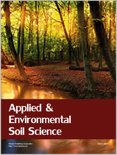
Applied and Environmental Soil Science
Uncovering vital insights for sustainable soil and environmental practices.Applied and Environmental Soil Science, an esteemed journal published by HINDAWI LTD, focuses on disseminating high-quality research in the fields of soil science and environmental applications. With an ISSN of 1687-7667 and an E-ISSN of 1687-7675, this open-access journal has been a vital resource for the academic community since its inception in 2009. As of 2023, it holds a commendable position in the Q2 category for both Earth-Surface Processes and Soil Science, highlighting its impact in these crucial disciplines. The journal’s rankings further affirm its significance within the field, being placed 61st in Earth and Planetary Sciences and 58th in Agricultural and Biological Sciences. Researchers and practitioners alike benefit from the collaborative platform it offers for sharing innovative studies essential for sustainable soil management and environmental integrity. With a focus on advancing knowledge and fostering interdisciplinary dialogue, Applied and Environmental Soil Science stands as a crucial pillar for scholars and professionals dedicated to addressing the pressing challenges of soil and environmental health.

Soil Systems
Connecting Science and Soil: Bridging Theory with PracticeSoil Systems, published by MDPI, is a premier open access journal dedicated to advancing the understanding of soil science and earth-surface processes. Launched in 2017, this journal has quickly established itself with a strong presence in the academic community, holding a prestigious Q1 ranking in both Earth-Surface Processes and Soil Science as of 2023. With an impressive Scopus rank in the top 20% of its categories, Soil Systems is an essential platform for disseminating groundbreaking research addressing the challenges and complexities of soil management, its ecological significance, and its role in sustainable development. The journal operates under an open access model since 2018, ensuring maximum visibility and accessibility for researchers, professionals, and students alike. Based in Switzerland, at ST ALBAN-ANLAGE 66, CH-4052 BASEL, Soil Systems encourages contributions that promote interdisciplinary collaboration, innovative methodologies, and the application of findings to real-world issues related to soil health and environmental sustainability.

Range Management and Agroforestry
Transforming Agriculture through Innovative ResearchRange Management and Agroforestry, published by the RANGE MANAGEMENT SOC INDIA, is a pivotal journal dedicated to the advancing fields of range management, agroforestry, and sustainable agricultural practices. With an ISSN of 0971-2070, this journal has carved out a niche for itself within key Agricultural Sciences categories, achieving a commendable Q2 ranking in Forestry and Q3 in both Agronomy & Crop Science and Food Science as of 2023. It serves as a vital platform for researchers, professionals, and students to disseminate and access innovative research findings that address the pressing challenges in land management, biodiversity conservation, and food security. Spanning a convergence of years from 2009 to 2024, the journal provides insights into practical applications and theoretical advancements in managing grasslands and agroforestry systems, further emphasizing the role of interdisciplinary approaches in tackling ecological and agricultural issues. With a focus on enhancing knowledge within India and beyond, Range Management and Agroforestry is instrumental in fostering collaboration and communication among scholars striving for sustainable solutions in a rapidly changing environment.
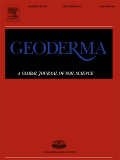
Geoderma
Advancing Knowledge in Soil and Ecosystem DynamicsGeoderma is a leading academic journal published by ELSEVIER, focused on the vital field of Soil Science. With an impressive impact factor and ranking as Q1 in its category for 2023, this journal stands as a prominent platform for researchers and professionals seeking to explore advanced scientific studies related to soil and its relationships with the ecosystem. Covering a wide range of topics from soil formation and characterization to land use and management practices, Geoderma is recognized for its rigorous peer-review process and is highly regarded within the global scientific community, as evidenced by its ranking of #12 out of 159 in the Scopus categories of Agricultural and Biological Sciences and Soil Science, placing it in the top 92nd percentile. With its inception dating back to 1967, the journal continually adapts and converges its content to meet the evolving demands of soil research until 2024 and beyond, providing invaluable insights for students, professionals, and researchers alike.
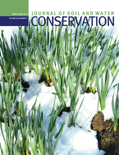
JOURNAL OF SOIL AND WATER CONSERVATION
Transforming knowledge into action for conservation.The JOURNAL OF SOIL AND WATER CONSERVATION, published by the Soil Water Conservation Society, is a leading peer-reviewed journal dedicated to the critical fields of agronomy, soil science, and water conservation. With its inception in 1973 and a convergence period extending to 2024, the journal plays a pivotal role in disseminating innovative research, management practices, and policy analysis aimed at promoting sustainable land and water resource management. The journal boasts an impressive Impact Factor and ranks in the Q1 and Q2 quartiles across key categories, including Agronomy and Crop Science, Nature and Landscape Conservation, and Water Science and Technology. It serves as an essential platform for researchers, professionals, and students to engage with cutting-edge findings that address pressing environmental challenges. Through its commitment to advancing the science of soil and water conservation, this journal remains a vital resource for enhancing ecological integrity and promoting sustainable agricultural practices.
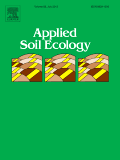
APPLIED SOIL ECOLOGY
Pioneering Research in Soil Biology and EcologyApplied Soil Ecology, published by Elsevier, is a premier journal dedicated to advancing the field of soil ecology through rigorous research and innovative methodologies. With an impressive impact factor and a consistent placement in the Q1 quartile across various categories including Agricultural and Biological Sciences, Ecology, and Soil Science, this journal underscores its significance in the scientific community. The journal's scope encompasses critical areas such as soil biology, microbial ecology, and the role of soils in ecosystem services, aiming to foster collaboration and knowledge exchange among researchers, professionals, and students. The convergence of research efforts from 1994 to 2024 highlights its commitment to maintaining current and relevant discourse within the field. While open access options are not available, the quality and depth of the articles published ensure that the latest findings and discussions are accessible through institutional subscriptions. With a strong focus on empirical studies and applied research, Applied Soil Ecology is an essential resource for anyone interested in the complexities of soil ecosystems and their impact on the environment.
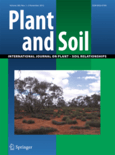
PLANT AND SOIL
Nurturing scientific dialogue for a sustainable future in agriculture.PLANT AND SOIL is a prestigious academic journal that has been at the forefront of plant and soil research since its inception in 1948. Published by SPRINGER in the Netherlands, this journal has carved a niche as a leading source of high-quality, peer-reviewed articles, which are essential for researchers, professionals, and students in the fields of Plant Science and Soil Science. With an impressive impact factor placing it in the Q1 category of both disciplines, it ranks 50th in the field of Plant Science and 24th in Soil Science, highlighting its influence in the scientific community. Although not available as open access, the journal provides a wealth of knowledge and insights into the interactions between plants and soils, exploring critical topics such as soil health, crop productivity, and sustainable agriculture practices. Researchers who wish to contribute to this vital area of study through their empirical findings will find PLANT AND SOIL to be an invaluable platform for disseminating their work and connecting with a network of leading scholars committed to advancing our understanding of these essential ecosystems.